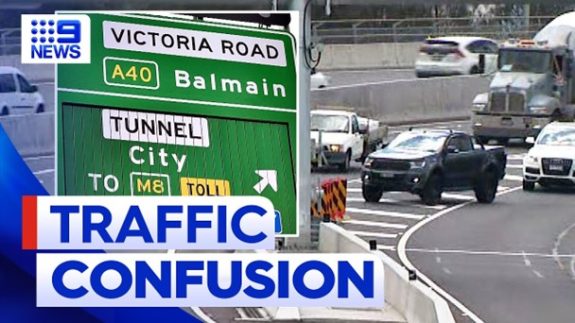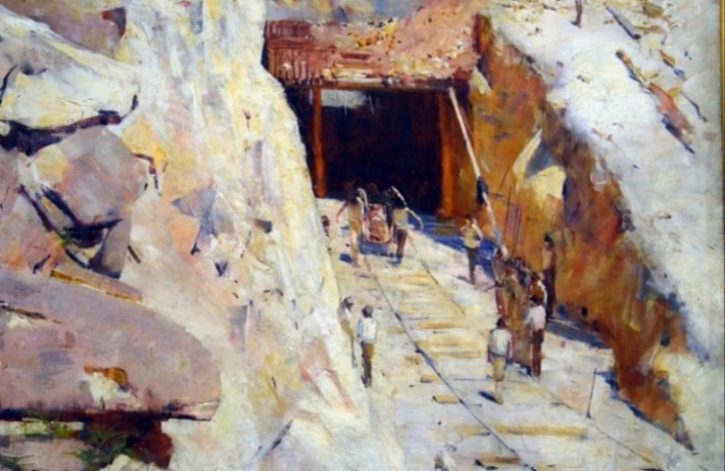Living in a More Motorized Harbour City: Are the New Motorways Improving Quality of Life in Sydney?

By Denis Bright
Media coverage of the traffic chaos in Sydney’s Inner West associated with the opening of the Rozelle Interchange on 26 November 2023 has faded into transport history. WestConnex now offers 33 kilometres of new road tunnels and improved motorway connections. The total estimated cost is at least $20 billion according to estimates from journalist Elias Visonytay at The Guardian (24 November 2023).
As the exclusive operator of WestConnex, Transurban boasts of its commitment to equitable tollways and environmental sustainability. These changes may enable the motorway networks to reach net-zero on 2005 emission levels by 2050. The use of electric vehicles will assist in emission reduction. Any increases in motorized traffic might balance some of these positive improvements.
Traditionally, NSW Governments have managed both toll collection and commitment to public transport. This was the case with Sydney Harbour Bridge and the Harbour Tunnel between 1994-2015. Initially, public transport patronage of the Harbour Bridge probably exceeded car traffic through the addition of tram tracks and electrified train lines adjacent to the road networks.
After an initial slow start, post-1945 NSW state governments added the Cahill Expressway in 1958. Quite a network of tolled motorways has been added by 1994 when the Sydney Harbour Tunnel became fully operational.
Interest in the social impact of tunnelling operations near Sydney is not just a contemporary concern. The rail tunnelling project at Lapstone Tunnel in the Lower Blue Mountains at Glenbrook attracted the iconic artist Arthur Stretton (1867-1943) in 1891. His interest in the scenery was diverted by a construction accident which took the life of a young worker. (Image: Art Gallery NSW).

This painting showed the body of Edward Brown being carried out of the Lapstone Tunnel by respectful workers. The construction workers stopped work for the remainder of the day to honour their deceased colleague.
These were difficult times for Colonial Australia during the global depression of the early 1890s. Unemployment reached around 25 per cent of the workforce. Recovery of employment was a real priority to justify environmental shortcuts.
Arthur Stretton also ventured into environmental politics in 1893. He wrote to The Daily Telegraph on 9 December 1893 to oppose the mining of a coal seam at Cremorne Point which threatened the ambiance of the harbour views that he often covered in his paintings.
The restless modernism of Australia’s mega-city has allowed vast tollway networks to crisscross Sydney.

Serving a Restless Mega-City Well?
Maintaining affordable public transit fares for concession-holders was a key factor in quietening public opposition to all this motorway construction and tunnelling. Opal fares are capped at a total of $2.50 a day for seniors on all modes of public transport. There is a cap of fifty dollars a week on all other adult OPAL travel transits.
Perhaps the greatest planning injustices in Greater Sydney are from the transformation of many inner suburbs through gentrification.
Historical gems like this four-bedroom terrace house in Redfern sold for $2.3 million in November 2023 (Image: Ray White).

Fortunately, rents in the inner-city still vary considerably. Some rentals are still below $800 per week.
With 5.5 million residents in Greater Sydney, it is impossible to fit this population into the most convenient locations in Sydney’s inner-suburbs.
Reenacting Arthur Streeton’s explorations in 1891, it is possible to join the M7 near Glenbrook and travel to Sydney’s CBD without the interruptions caused by traffic lights on conventional roads. Toll fees are now capped at $11.78 for use of multiple motorways by Class A vehicles. This was a commendable initiative by the Minns Government which seems destined to becoming a long-serving NSW government in the old traditions of post-1945 state governments.
Transurban has obviously made confidential arrangements with the ATO to minimize its own company tax payments as noted by ABC News (8 November 2023):

As with other privatization efforts by conservative governments, new tollways and charges by corporate providers do not benefit consumers. Transurban operates on the world stage. Australia has become a hub of its global operations. Details of Transurban’s operations worldwide are available in the 2023 Annual Report. The financial statement within the Annual Report showed that Transurban declared a global loss of $295 million on its revenue base of $4.2 billion. The renumeration of Transurban’s seven directors was not overlooked with a combined provision of a notch under $15 million.
The impact of motorways and tunnelling on carbon emissions in Sydney is still not in the public domain.
Recent data from the Federal Department of Climate Change, Energy, the Environment and Water (DCCEEW) provides an update on carbon emissions from all forms of energy use across Australia. Motorized transport emissions are not expected to decline in the late 2020s. Greater use of electric vehicles and application of other energy saving technology might improve this situation. These are national estimates, Details of the local situation in Greater Sydney are not available from DECCEW data.

Emission Profiles by Sector 2005-30
Readers are welcome to offer feedback on their experiences with the new motorways in Sydney and other locations in the contemporary quest for greater environmental sustainability and protection of scenic ambiance. At Cremorne Point, Arthur Streeton recorded the steam ferry as it made its way across Sydney Harbour on payment of the fare of one penny. Here is the scene today much more than a century later (Image: realestate.com.au):

Residence with a View
 Denis Bright (pictured) is a financial member of the Media, Entertainment and Arts Alliance (MEAA). Denis is committed to consensus-building in these difficult times. Your feedback from readers advances the cause of citizens’ journalism. Full names are not required when making comments. However, a valid email must be submitted if you decide to hit the Replies Button.
Denis Bright (pictured) is a financial member of the Media, Entertainment and Arts Alliance (MEAA). Denis is committed to consensus-building in these difficult times. Your feedback from readers advances the cause of citizens’ journalism. Full names are not required when making comments. However, a valid email must be submitted if you decide to hit the Replies Button.
Like what we do at The AIMN?
You’ll like it even more knowing that your donation will help us to keep up the good fight.
Chuck in a few bucks and see just how far it goes!
Your contribution to help with the running costs of this site will be gratefully accepted.
You can donate through PayPal or credit card via the button below, or donate via bank transfer: BSB: 062500; A/c no: 10495969










12 comments
Login here Register here-
Maya -
Burleigh Waters -
Leila -
Roswell -
leefe -
Ivy -
rubio@central coast -
Even Stephen -
Bob -
Phil Pryor -
New England Cocky -
Burleigh Waters
Return to home pageSydney was already a world city 140 years ago. I don’t think that all that tunnelling has improved quality of life. A sprawling city like Sydney needs affordable rapid public transport.
Thanks Denis!!!
Difficult to appreciate the landscapes of busy road tunnels.
Also so expensive to go from Richmond to city and back.
Good to see Arthur Stretton being praised for his love of ambiance in Sydney’s harbour, beaches and bushland
I can’t drive far enough out of the way to avoid driving in, near, or in sight of Sydney.
Roswell – it’s always best to go the long way around. Via Alice, if not Perth.
Denis, Thanks for interesting article on the Sydney tunnels. Hopefully it will lead to a more efficient road network.
The Central Coast has a good rail service with a 75 minute transit from Woy Woy to Sydney on some trains. However, new housing areas often a long way out from railway stations offering affordable OPAL fares. Using connecting buses makes the journey a very long one. Bad planning has contributed to these problems which cannot be fixed in the first term of the Minns Government.
But Ivy, is there enough political activism to deliver these hopes?
The most downloaded report of 2022-23 was University of Cambridge’s ‘UK Fires Absolute Zero’ (pdf), an overview of climate mitigation. Reading the report I wonder how soon before petrol cars are phased out and tunnels given over to EVs (that are that are too expensive to recharge), or horses? Interesting days ahead for horse traders.
The Sydney Tunnel non system is Shithouse (to coin a phrase). I took my wife for a flight, leaving home c. 3 a m, rainy, crook low beams compulsory, new signs very high and incomprehensible, and, on the way home got tunnelled into going west towards Liverpool. No panic, I knew to escape at Beverley Hills to get home at Turramurra…extra twenty Kms. Disgraceful signage is up, low beams are low, rain…ugghh. Cost? Waste? I’ve blundered before on unfamiliar new tunnelling, wrong lane at last minute while analysising…
The Rozelle traffic chaos of the past few weeks is the result of planned toll-road construction to reduce travel times from the Blue Mountains to the Sydney CBD by 30 minutes ….. at a cost of a mere about $30 BILLION.
.
A free gratis bonus has been the two (2) hour sojourn in the Rozelle Interchange rolling car-park given in to allow vehicle travellers to enjoy more fossil fuel fumes and diesel particulates than they currently breathe in their stacked sardine cans above the ”city highways”.
.
This is a much preferred scenario to decentralised government agencies into regional cities where the air is clean, the open spaces are wide and traffic congestion occurs for minutes rather than hours. Unfortunately, this reduces personal stress and health bills thus failing to contribute to the national economy much to the chagrin of our bankers.
.
Well ….. why have kids growing up in fresh air, able to go outside and play with their mates in person when modern living requires all kids to be glued to their computer/mobile phone/tablet watching whatever and communicating with a line of type!!
.
Naahhh ….. the best way to see Sydney (and any other metropolitan city) in in the rear-view mirror.
Labor needs to retrieve its activist credentials: Well Said Denis